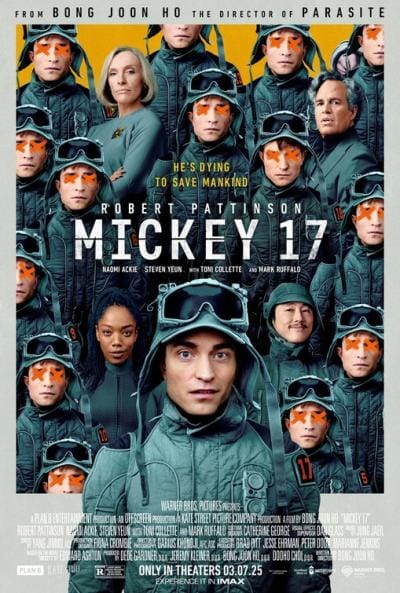
Introduction
Martin Scorsese is best known for his gritty crime dramas, but with The Age of Innocence, he delivered a slow-burning tale of emotional restraint and societal expectations. Adapted from Edith Wharton’s Pulitzer Prize-winning novel, The Age of Innocence is a lavish period piece set in upper-class New York society. In this review, we explore how Scorsese’s directorial finesse, combined with stellar performances and rich visuals, creates a haunting story about the price of conformity and forbidden love.
Rating Table:
| Category | Rating (out of 5 stars) | Remarks |
|---|---|---|
| Story/Plot | ★★★★☆ (4/5) | A poignant narrative of repressed love and societal expectations, adapted faithfully from Edith Wharton’s novel. While some viewers may find the pacing deliberate, the story’s emotional resonance is profound. |
| Acting | ★★★★★ (5/5) | Stellar performances by Daniel Day-Lewis, Michelle Pfeiffer, and Winona Ryder. Day-Lewis portrays Newland Archer’s internal conflict with nuance, Pfeiffer brings depth to the Countess Olenska, and Ryder delivers a compelling performance as May Welland. |
| Direction | ★★★★★ (5/5) | Martin Scorsese showcases his versatility, delivering a film that diverges from his typical themes yet maintains his signature attention to detail. His direction captures the intricacies of high society and the subtleties of unspoken emotions. |
| Cinematography | ★★★★★ (5/5) | Visually sumptuous, the film boasts exquisite compositions and lighting that enhance the period setting. The cinematography complements the narrative’s themes of restraint and longing. |
| Production Design | ★★★★★ (5/5) | Award-winning sets and costumes authentically recreate Gilded Age New York, immersing viewers in the opulence and rigidity of the era. The meticulous design underscores the characters’ societal confines. |
| Score/Soundtrack | ★★★★☆ (4/5) | Elmer Bernstein’s score subtly underscores the film’s emotional undercurrents, enhancing the narrative without overpowering it. The music aligns seamlessly with the film’s tone. |
| Emotional Impact | ★★★★☆ (4/5) | The film evokes a deep sense of melancholy and introspection, portraying the pain of unfulfilled desires and the weight of societal expectations. Its emotional depth resonates, though its subtlety may not appeal to all viewers. |
| Rewatchability | ★★★☆☆ (3/5) | While the film’s richness offers rewards upon multiple viewings, its deliberate pacing and nuanced storytelling may not cater to all tastes. It’s particularly appealing to fans of period dramas and literary adaptations. |
Overall Ratings
- Rotten Tomatoes (Critics): 88% approval rating based on 65 reviews, with an average rating of 7.5/10.
- Metacritic: Score of 90 out of 100, indicating “universal acclaim.”
- IMDb: User rating of 7.2/10 based on over 30,000 votes.
- CinemaScore: Audience grade of “B+” on an A+ to F scale.
Plot Summary
The Age of Innocence follows Newland Archer (Daniel Day-Lewis), a successful and respected attorney engaged to the beautiful and proper May Welland (Winona Ryder). However, his world is upended when he meets May’s cousin, the free-spirited Countess Ellen Olenska (Michelle Pfeiffer), who has returned to New York following a failed European marriage.
As Archer becomes emotionally entangled with Ellen, he finds himself torn between his passion and his duty to uphold the rigid rules of his society. The Age of Innocence paints a powerful portrait of a man bound by expectations, longing for something he cannot have.
Performances and Character Depth
Daniel Day-Lewis gives a remarkably nuanced performance as Newland Archer, portraying a man imprisoned by his own privilege. His internal struggle is portrayed through subtle gestures and restrained emotion, a performance that fits perfectly with the themes of The Age of Innocence.
Michelle Pfeiffer is radiant and tragic as Ellen, delivering a graceful and intelligent portrayal of a woman ahead of her time. Winona Ryder also shines as May, whose sweetness conceals a quiet cunning that adds complexity to her seemingly innocent character.
Direction and Cinematic Excellence
Scorsese’s direction in The Age of Innocence is meticulous and elegant. Every frame is composed with painterly precision, from the opulent ballrooms to the smallest dinner detail. His signature tracking shots and attention to visual detail elevate the film into more than just a historical romance, it becomes a study in atmosphere and tension.
Through his lens, The Age of Innocence becomes a haunting meditation on appearances, honor, and the quiet devastation of unrealized desire.
Themes and Emotional Weight
At its core, The Age of Innocence is about repression. It’s about the agony of choosing what is right over what is deeply desired. Scorsese uses silence, glances, and unsaid words to communicate the emotional weight between Newland and Ellen.
The film asks: is it better to live a life that is respectable or one that is true to yourself? The Age of Innocence doesn’t offer easy answers, but it’s tragic conclusion lingers long after the credits roll.
Cinematography, Costume & Score
The film’s visual palette is rich and warm, capturing the grandeur of 19th-century New York society with authenticity. From the candle-lit parlors to the intricately designed costumes, every aspect feels immersive.
The soundtrack, composed by Elmer Bernstein, enhances the mood with its sweeping classical themes, giving The Age of Innocence an additional layer of romantic melancholy.
Final Verdict
To conclude this The Age of Innocence movie review: this is a film that rewards patience. It is not fast-paced or flashy, but its emotional power lies in its restraint. Scorsese has crafted a quiet epic about unfulfilled love and societal pressure, one that remains painfully relevant even today.
The Age of Innocence may not be for everyone, but for those who appreciate character-driven stories and masterful filmmaking, it is an unforgettable experience.




